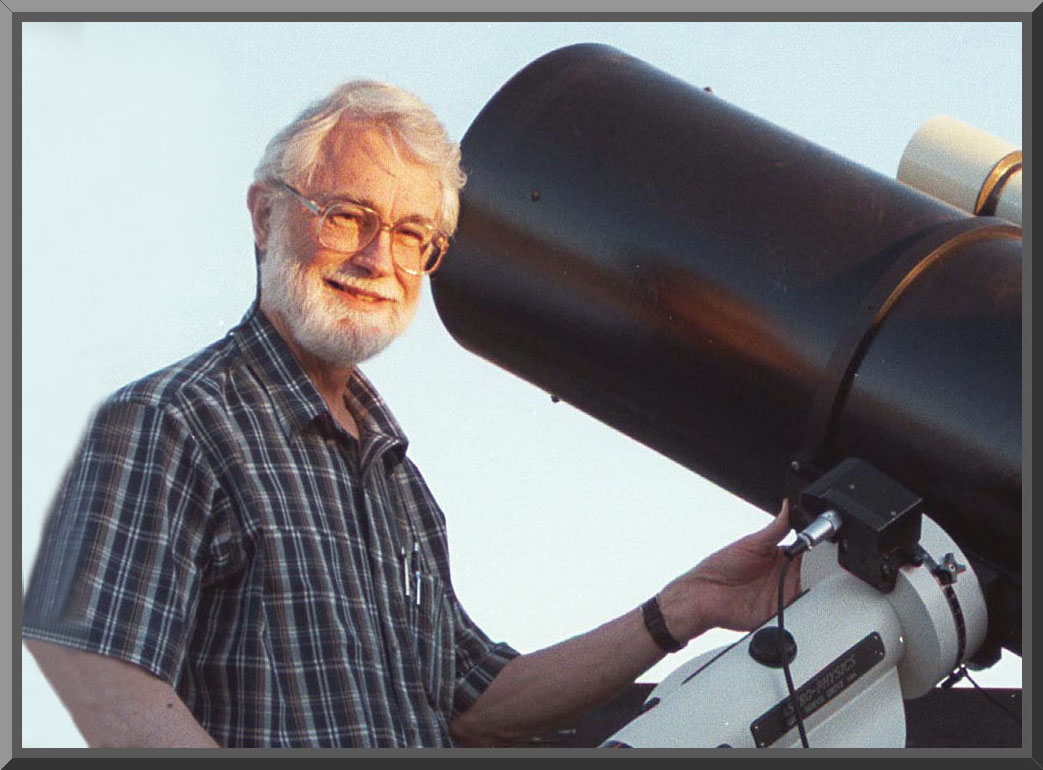|
Michael A. Stecker
|
|
Bert Katzung, M.D., Ph.D.
San Rafael, California
Bert
is
Professor of Pharmacology
at the University of California San
Francisco Medical School.
Seen here at his northern California observatory, Bert
is standing by his
Astro-Physics 1200
GOTO mount. The
telescope is his new 12.5 inch Ritchey-Chretien with
an
A-P 80 mm
guide-scope riding on top.
photo by Bert Katzung
|
|
Contact information Biography I have been interested in photography for most of my life, mainly to satisfy some aesthetic urge. (Unlike the popular misconception, most scientists have a very strong interest in art and some are very talented, especially in music. I can't say that I have any talent, but I certainly have the interest.) Daylight photography has been a rewarding interest for many years, with some periods of strong activity and others of rather less activity. You can see the results of some of my photographic activity in the Daylight Photography section. My initial beginner's luck photographing the comets confirmed my interest in astronomy: how many hobbies combine the aesthetic satisfaction of photographing beautiful and mind-boggling objects with the intellectual stimulus of understanding one of the most dramatic sciences and the technical fascination of using fine optical and mechanical devices? The result has been a progressive increase in my involvement with astroimaging, both with film, and most recently (and tentatively), with a CCD camera. Most of the images posted in the Astro Images section of this site are film images, because the CCD imaging process involves many new techniques that I am still learning. Fortunately, many expert practitioners of both types of astro imaging participate in Internet newsgroups, so it is easy to get advice and encouragement.
Observing site Astronomical Equipment Mount |
|
|
|
|
